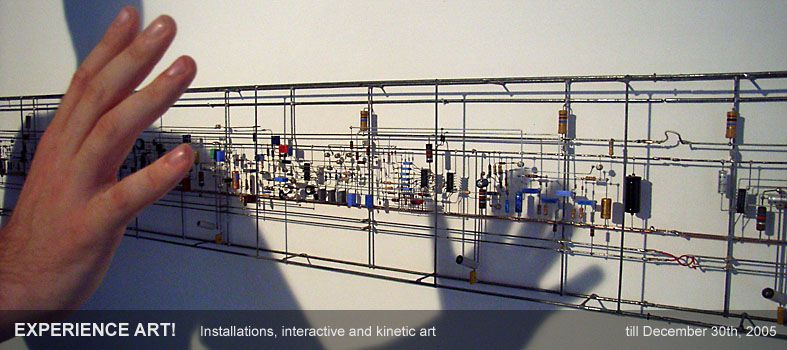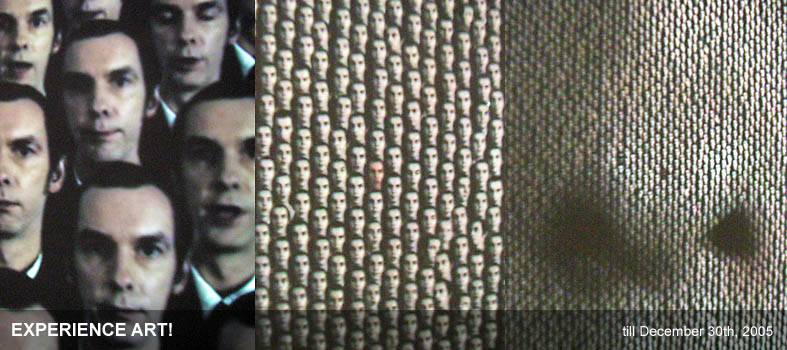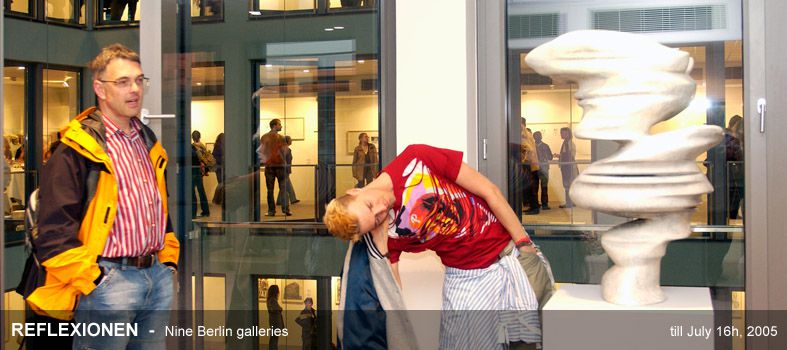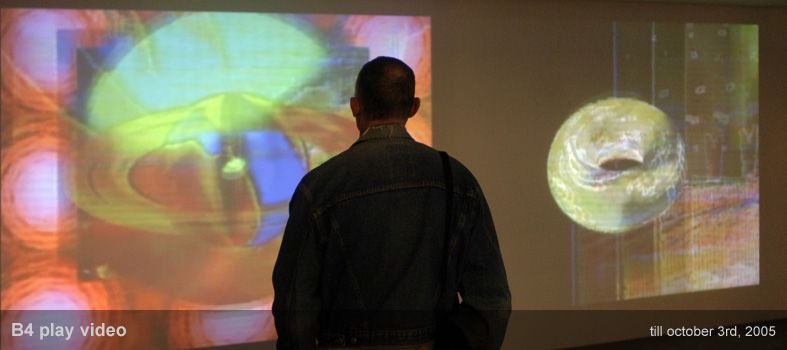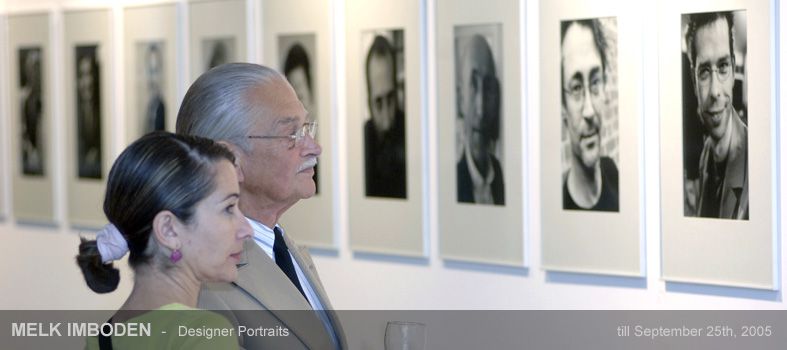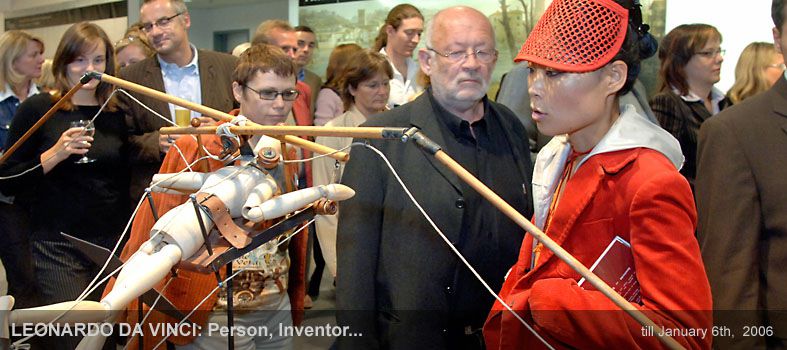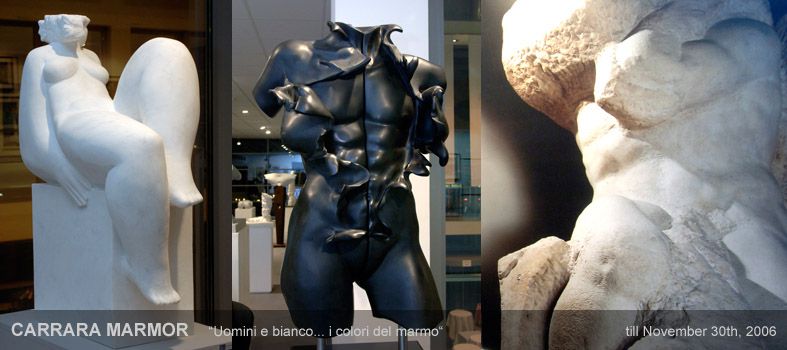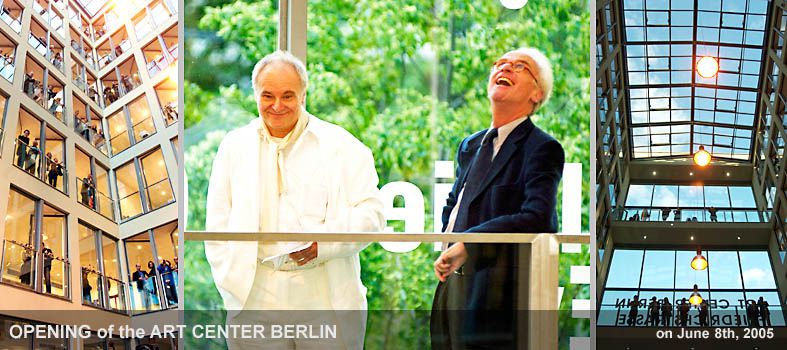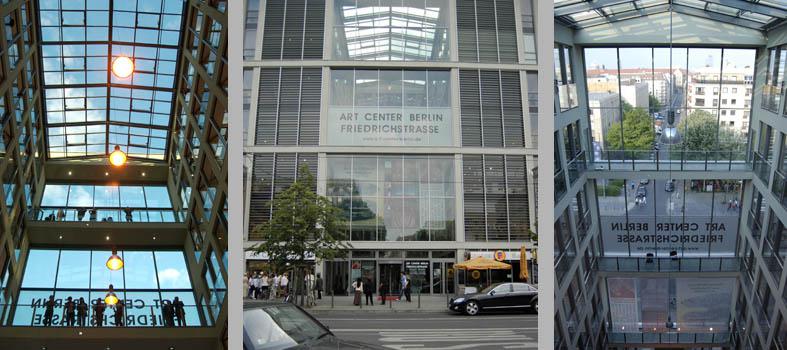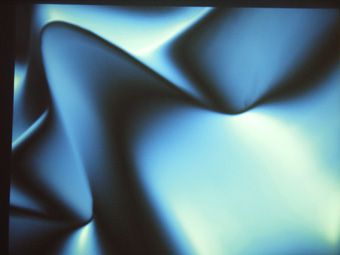
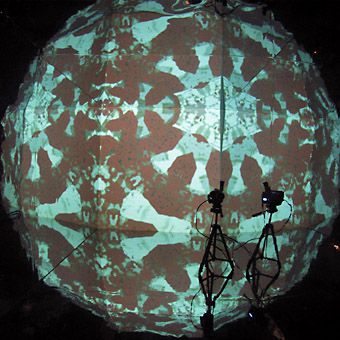
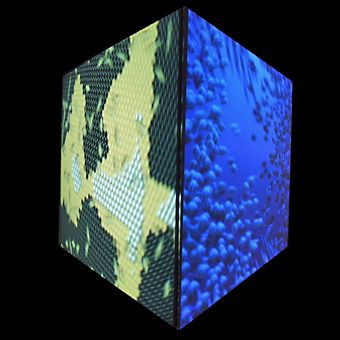
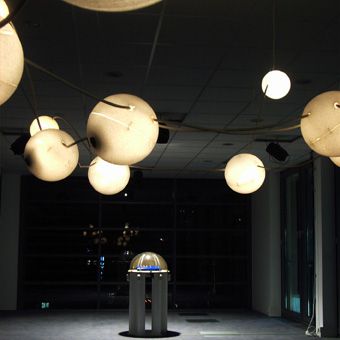
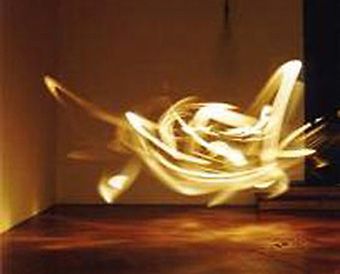
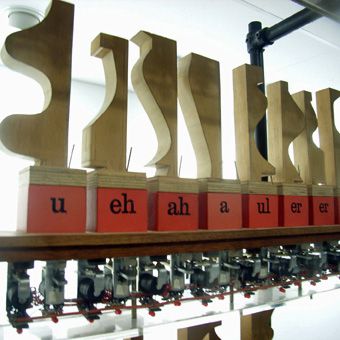
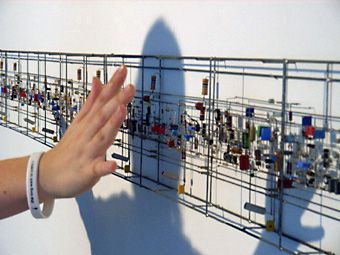
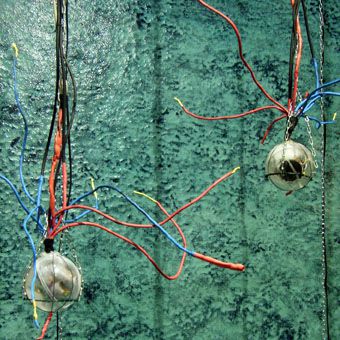
EXPERIENCE ART!
till December 30th, 2005
The Exhibition Experience Art! is dedicated to the fascinating theme of merging art and technology.
Art Center Berlin Friedrichstrasse offers a world of medial and multisensual experiences on 1,300sqm to visitors. They may become part of installations and interactive objects: in generating images through sounds, sounds with their shadows and music by motion, the process of creation of the exhibits will reveal itself.
Experience Art! presents award-winning artists from Europe, USA and Asia, and some newcomers with exceptional creative and technical skills.
Curator Giovanni Longo has succeded in displaying a special period in the history of art that shows the continuity of creative explorers.
Peggy Sylopp (generative.org)
"Infinitoscope"
In the Infinitoscope pictures of real objects and persons are fractured and multiplied several times in fascinating patterns in a spherical crooked optical room.
The movement of the visitors in different distances to the camera animates the patterns in new manners permanently.
Receding to an elaborated computer conversion in real time and visual feedbacks, new fractal-like forms emerge all the time, which mediates the visitor the feeling that he is floating in a space of ad infinitum extension, in a spherical illusion of a virtual reality.
Tim Coe - "METAFORMS"
3-channel video installation, 2003
First, in each of the three parts of ?Metaforms? the object appears large scaled, but due to the permanent and constant movement of the camera, this first image more and more becomes a small part of the great mass of similar figures. These parts start to act in turn as pixels which create slowly the first image again.
These films from Tim Coe have neither start nor end.
Sometime the observer must switch his perception from perceiving several small parts to perceiving the large scaled picture. To see both parts at the same time seems to be impossible.
Jürgen Michaelis - "Circus Neuronimus"
Sound installation with the Resonator Neuronium
The visitor enters the Circus Neuronimus a lot earlier before he can touch the experimental synthesizer Resonator Neuronium, which is arranged in the centre under a screen of Plexiglas. There his neuronal webs are working constantly.
Six motion detectors are activated by the assigned neurons by passing by. The sounds of the neurons can be heard via speakers, which are grouped in a circle. The apparatus cannot be touched under the screen of Plexiglas.
Anyhow the visitor can influence the sounds himself via six sensitive sensor contacts on the screen of Plexiglas, which are working as Midi controls and telecommand the Resonator Neuronium. By touching these sensor contacts you change the cutoff-frequency of the neurons influencing thereby the whole net and sound.
It is also possible to affect a second parameter by holding one finger in one position and swipe with another one over the sensor. Thereby the tone pitch of the stimulus (GECO) is changed. All changes are saved within the RN.
After the visitors have activated the motion detectors 25 times, the newly changed preset is paired with the next one in the sequence and is saved as new one. A new net with sound figures emerges. This cycle is repeated constantly with all 101 presets in the circle. During the whole installation an individual sound episode is developing, which is influenced and constructed by the interaction with the visitor.
© 2005 J. Michaelis
Nicolas Anatol Baginsky - "Killer Mosquito"
Killer Mosquitos are relative small flying machines carrying a strong spotlight and/or a camera. They are fixed on a very stable helix cable attached to the ceiling. The Killer Mosquitos are activated by noises. A microphone at the installation room is used for a FFT (Fast Fourier Transformation). Each Mosquito reacts to a different sound spectrum.
The installation "Killer Mosquitos" is an open system, in which different collective behaviour patterns compete with each other. These patterns are composed of the sum of the single activities of the machines and their dependence. In consequence of the outside impact the Killer Mosquitos switch between disordered chaos to a macroscopic structure.
Martin Riches
"The Talking Machine" (1989-1991)
32 tuning pipes with air valves, 4 wind arks, magazine bellows, air hoses, blower, ramps of steel, and computer. Height 230 cm.
Each pipe consists of a noise generator: a tongue or a pipe and a resonator based on the human oral cavity. By filtering the noise the resonator creates human-speech-like sounds. Three pipes have ?noses? and can thereby articulate m-, n-, and ng-sounds. The computer manages the valves, which regulate the air supply of the pipes. The machine has memorized several hundred words in English. Visitors can build sentences with these words, and the machine will address them, for example: "How I want a cigarette", in a monotone language, because the pipes are tuned on the same tone pitch. The machine can also recite the alphabet and can count to 100 in English, German, and Japanese.
Peter Vogel - Wall of sound "Rhythmic Sound II"
The wall of sound "Rhythmic Sound II" is a constructed six-meter wide relief consisting of electronic tools. The wall of sound reacts with sounds to the movements and the shades of the observer. Each of the fourteen sensors activates a musical minimum sequence, which can be combined with any other sensor sequence and can be varied in the sound intensity. The volume of the several sound figures accelerates more or less rapid by shading the sensors and abates slowly in return by the incidence of light. The attraction of playing with the wall of sound is due to the possibility to dose the volume consciously, to swell and ebb the several sound figures, and, most of all, to the possibility of trying out and conceiving new combinations.
The interaction with the wall of sound is a game of movements and a game with sound figures at the same time. The given material displays the first part of the composition, the observer/ player/ dancer as the second part accomplishes the composition.
The perception of the dynamic in this process of interaction between machine, musical structure and acting person on the one side, and the perception of the room through the connection of light, person, and object on the other side, defines the actual experience of playing with the sound of wall.
Marije Baalman, Alberto de Campo - "Sonobotanic Plants"
The Institue for Predictive Sonobotanic (IPSO; a research group in the Foundation for Auralisation and Computation of Transient Objects: FACTO) created the models shown at this exhibition. In doing so state-of-the-art technology has been used: sensors measure the surrounding conditions like brightness, temperature, moisture, and sound. Mathematical models, which are implemented in the sound computer language SuperCollider, convert the data; the results of the calculations are auralized with the speakers in the physical model.
Because the field of sonobotanic (even more of predictive sonobotanic) is discussed controversial in some scientific spheres (some of them question the validity of the field as real science), the researchers decided to get via art in touch with a wider audience to seat their models in more realistic environments.
